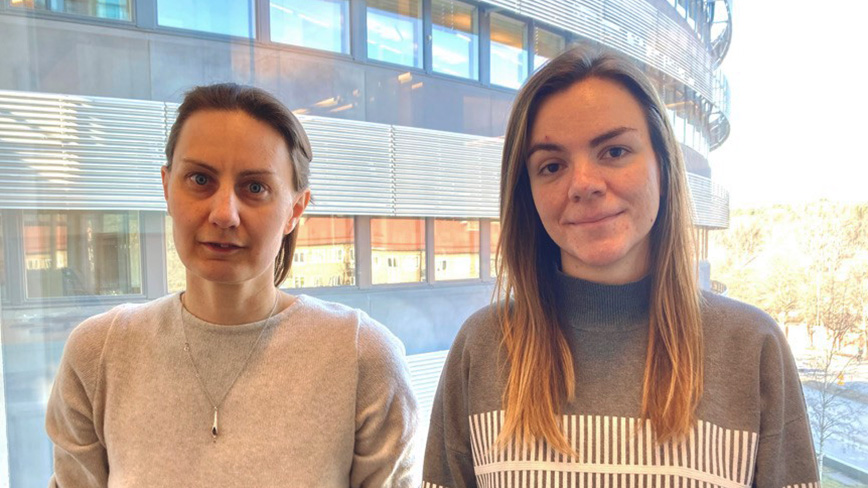New way to identify functional genomic regions

Researchers at the Department of Gene Technology have developed a protocol that describes how to identify active genes and functional genomic regions from nascent RNA-sequencing data.
“It's a step-by-step method for knowing exactly how to get a lot of information from nascent transcription data,” says Adelina Rabenius.
She is a doctoral student and the first author of a scientific article published in March in the scientific journal Star Protocols from Cell press, where the new method is presented.
“We study how transcription across the genome is controlled. With the protocol we now published, we can quantify RNA synthesis along genes and the genes' control regions, says Anniina Vihervaara, Assistant Professor at Gene Technology.
20,000 genes per cell
Each cell in the human body contains 20,000 genes, but different genes and functional regions are active in different cells. A transcription program determines which RNA and proteins that are produced in the cell and it is the functional regions of the genome that control which genes are transcribed. Messenger RNA, or mRNA, contains the code to make a protein that then helps build the cell or regulates cellular functions.
“Nascent RNA-sequencing measures where polymerase molecules synthesize RNA with nucleotide precision. By following polymerase molecules in the different regions of the genome, one can study how the transcription program in the cell is controlled. Polymerase molecules undergo various regulatory steps at each gene. They initiate transcription, pause near the beginning of the gene, wait for the right signal, and once released from the pause, elongate along the gene. At the end of the gene, the RNA is cleaved and the polymerase molecule stops transcribing. This new computational protocol makes it possible to analyse and visualize which steps are important for controlling polymerase at each gene in this particular cell and under its specific conditions,” says Anniina Vihervaara.
The researchers noticed that the step that controls polymerase pausing and release at the beginning of the gene is essential for provoking an instant change in the transcription program upon cellular stress. In essence, the single regulatory step of polymerase pause-release provided a switch that quickly activated hundreds, and inhibited thousands of genes.
Different caliber than traditional analyses
The protocol described by the researchers takes the RNA polymerase profile and identifies enhancers (distal regulatory regions), promoters (controls where gene reading begins), gene bodies (productive elongation of active genes), cleavage sites (nascent RNA is removed from the polymerase), and termination region (RNA polymerase is removed from the genome).
“The resolution and purity to identify functional regions are of a different caliber than in traditional analyses. It is also sufficient to have a single dataset (nascent RNA-sequencing) to identify which genes and functional regions are active in that particular cell and precisely under these conditions that are being studied,” says Anniina Vihervaara.
Nascent RNA-sequencing techniques have been widely used in model cells, to understand how gene transcription is regulated at all. According to Adelina Rabenius, the idea now is to use it in various disease models, e.g. to understand how cancer cells are formed and how they react to different drugs.
“It will be like a new dimension, with deeper understanding than what has been seen before. For example, there is a lot of cancer research where you can benefit from more information about how the cancer is regulated,” says Adelina Rabenius.
Text: Sabina Fabrizi
